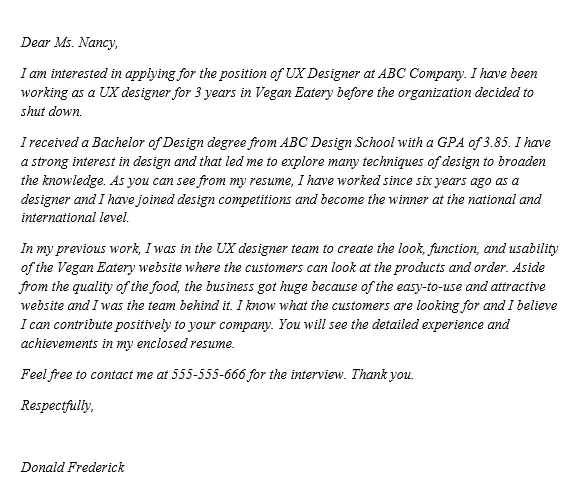Understanding the UX Designer Cover Letter
In the competitive field of User Experience (UX) design, a well-crafted cover letter is more than just a formality; it is your first opportunity to make a strong impression on a potential employer. It serves as a crucial introduction, allowing you to showcase your skills, experience, and personality in a way that a resume alone cannot. This document provides a platform to tell your story, highlighting how your unique abilities align with the specific requirements and culture of the company you are targeting. A compelling cover letter goes beyond simply reiterating your resume; it actively demonstrates your passion for UX design and your understanding of the role you are applying for. By taking the time to thoughtfully compose your cover letter, you significantly increase your chances of capturing the hiring manager’s attention and securing an interview.
Why a Cover Letter Matters
In the digital age, where resumes are often the primary focus, the value of a cover letter might seem diminished, yet this is far from the truth. A cover letter offers the chance to present a narrative, connect with the hiring manager on a personal level, and differentiate yourself from other candidates. It allows you to highlight not just what you’ve done, but also why you’ve done it, showcasing your passion for UX design and your alignment with the company’s mission. A strong cover letter is also a key indicator of your communication skills and attention to detail, crucial attributes for any UX designer. Furthermore, it shows initiative and a genuine interest in the role, signaling to the employer that you have taken the time to understand their needs and tailor your application accordingly. By investing in a well-crafted cover letter, you are essentially investing in your future career in UX design.
Highlighting Your UX Skills

Your cover letter is the ideal space to showcase your core UX skills. This is your chance to shine a light on your expertise, which goes beyond merely listing skills; it’s about illustrating how you have applied them in real-world scenarios. Mention your proficiency in user research, information architecture, interaction design, and usability testing. Provide specific examples of projects where you successfully utilized these skills to solve user problems or improve product usability. For example, describe how you conducted user interviews to gather insights, created user personas, designed wireframes and prototypes, or conducted A/B testing to optimize a user interface. Tailor your skill descriptions to align with the specific requirements of the job description. If the role emphasizes user research, emphasize your experience in this area; if it stresses prototyping skills, provide detailed examples of your prototyping proficiency. This targeted approach enhances your application’s relevance and value.
Showcasing Your Design Process
UX design is a process-driven discipline, and your cover letter provides the perfect canvas to describe your design process. Outline your approach to problem-solving, from initial research and ideation to prototyping, testing, and iteration. Briefly explain your methodology, whether you adhere to a specific design thinking framework or a more adaptable process. Illustrate your ability to move through the design phases, including the collection of user feedback, the iteration process, and the final delivery. Showcase your experience with different design tools, such as Sketch, Figma, Adobe XD, or others. It’s equally important to convey your collaborative skills. Mention any instances of cross-functional team efforts, especially when working with developers, product managers, and other stakeholders. Showcasing your process highlights your organized approach and ability to deliver successful design outcomes, which are crucial qualities in the UX field.
Demonstrating Problem-Solving Abilities
UX design is fundamentally about solving user problems, so your cover letter should highlight your problem-solving capabilities. Describe specific instances where you successfully identified and addressed user pain points. Offer a brief overview of the challenges you faced and explain how you approached them, highlighting your analytical and creative thinking skills. Detail the actions you took to reach a solution, which may include conducting user research, prototyping various solutions, and testing them. Emphasize the outcome of your problem-solving efforts by detailing the results you achieved, such as improved user engagement, increased conversion rates, or enhanced user satisfaction. Quantifiable achievements, such as a percentage increase in user satisfaction, significantly strengthen your claims. When describing your problem-solving skills, focus on practical applications and specific outcomes that reflect your ability to create effective and user-centered designs.
Quantifying Your Achievements

The best way to make your cover letter stand out is by quantifying your achievements. Instead of simply stating that you improved a product, use specific metrics to show the impact of your work. For example, “Increased user engagement by 25% by redesigning the navigation system.” or “Reduced user error rates by 15% through usability testing and iterative improvements.” Numerical data not only provides concrete evidence of your skills but also demonstrates your ability to deliver measurable results. When possible, back up your claims with statistics, such as the number of users affected by a change, the time saved, or the revenue generated. Include details about the tools you used and any notable outcomes or recognition you received. Use this information to enhance your claims and underline your overall impact on the project, showcasing that you’re a results-driven designer.
Tailoring Your Cover Letter
Generic cover letters rarely impress hiring managers. Instead, tailoring your cover letter to each specific role and company is crucial. Start by carefully reviewing the job description, and identify the key requirements and desired skills. Customize your cover letter to address these specific points, highlighting your relevant experience and skills. Show how your background aligns with their needs, and incorporate keywords from the job description naturally throughout your letter. Research the company’s values, culture, and recent projects to show your interest. Reference specific products or initiatives, and explain why you are excited about the opportunity to contribute. Personalization demonstrates a genuine interest in the role and the company, making your application more compelling. By demonstrating that you have done your homework and are invested in this particular opportunity, you greatly improve your chances of being considered.
Researching the Company and Role
Before you write your cover letter, dedicate some time to researching the company and the specific role you are applying for. Visit their website, social media profiles, and any relevant news or publications. This research helps you understand their mission, values, and recent projects, giving you valuable insights. Pay attention to their design style, their target audience, and the types of products or services they offer. Identify any specific challenges or opportunities the company might be facing, and consider how your skills and experience could contribute to their success. The more you know about the company and the role, the better equipped you are to tailor your cover letter to meet their needs. This targeted approach shows initiative and a genuine interest in the opportunity, which is highly valued by hiring managers. Highlighting your understanding of the company’s values and challenges sets your application apart from generic applications.
Personalizing Your Application
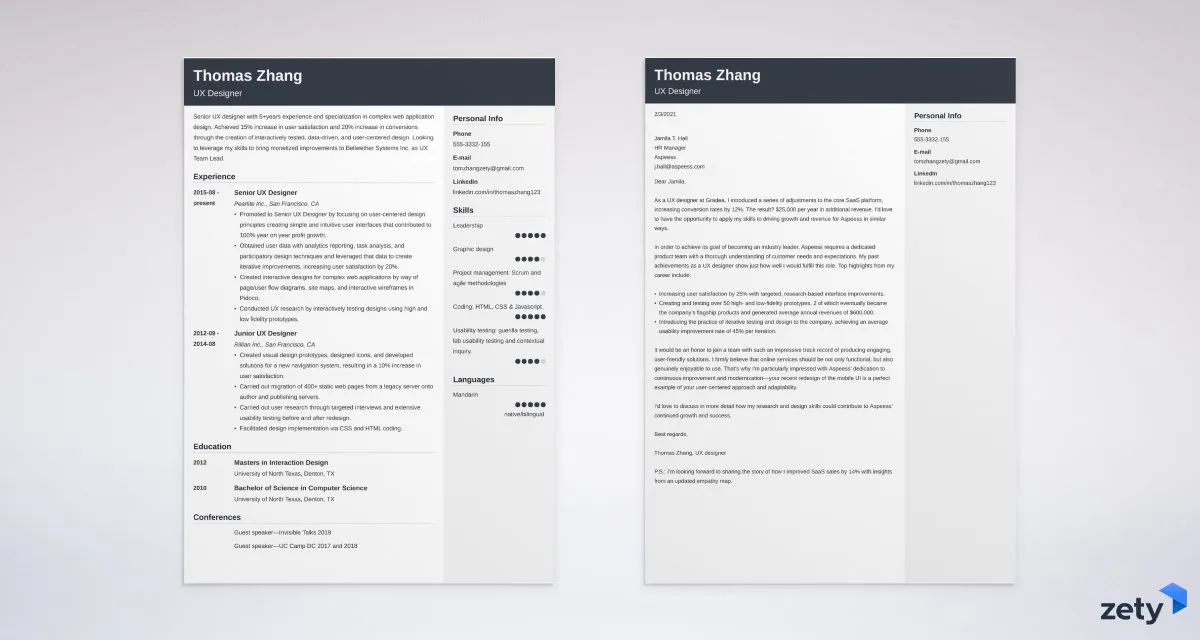
To stand out, personalize your cover letter beyond simply mentioning the company name. Show that you understand their unique needs and culture. One way to do this is to express genuine enthusiasm for the company’s products or mission. Reference specific projects that resonate with you or highlight how your values align with theirs. This shows your genuine interest and helps you make a more personal connection with the hiring manager. If possible, try to find out the name of the hiring manager and address your cover letter directly to them. Use their name, if available. This small detail shows extra effort and attention. Personalization can also involve mentioning any connections you have to the company, whether through mutual contacts or previous collaborations. These small touches help build a relationship with the hiring manager and significantly increase your chances of getting your application noticed.
Structuring Your Cover Letter for Impact
The structure of your cover letter can significantly impact its effectiveness. It should be well-organized, easy to read, and engaging. Start with a compelling opening that grabs the reader’s attention. The first paragraph should state the position you are applying for, where you found the job posting, and a brief summary of your most relevant skills or experience. In the body of your letter, use the second and third paragraphs to elaborate on your qualifications, showcasing your achievements and relevant experiences. Use specific examples to illustrate your skills and highlight your value to the company. Tailor these paragraphs to address the key requirements outlined in the job description. Finally, in your closing paragraph, restate your interest in the position, express your enthusiasm, and include a call to action, such as mentioning that your resume is attached and offering to provide further information. A well-structured cover letter allows you to present your information clearly, making it easier for the hiring manager to assess your qualifications.
Creating a Compelling Opening
The opening paragraph is your chance to capture the hiring manager’s attention immediately. It should be concise, engaging, and clearly state the position you are applying for. Avoid generic opening lines. Instead, create an opening that reflects your personality and your enthusiasm for the role. You can start by mentioning where you saw the job posting, but don’t make this the sole focus. Add something that hints at what you want to convey in the rest of the letter. You can open with a brief anecdote that shows your passion for UX design. This can involve your interest in the company’s products, services, or their impact on users. Whatever you choose, ensure your opening is tailored to the specific job and company. This demonstrates your effort and makes the hiring manager want to continue reading.
Developing the Body Paragraphs
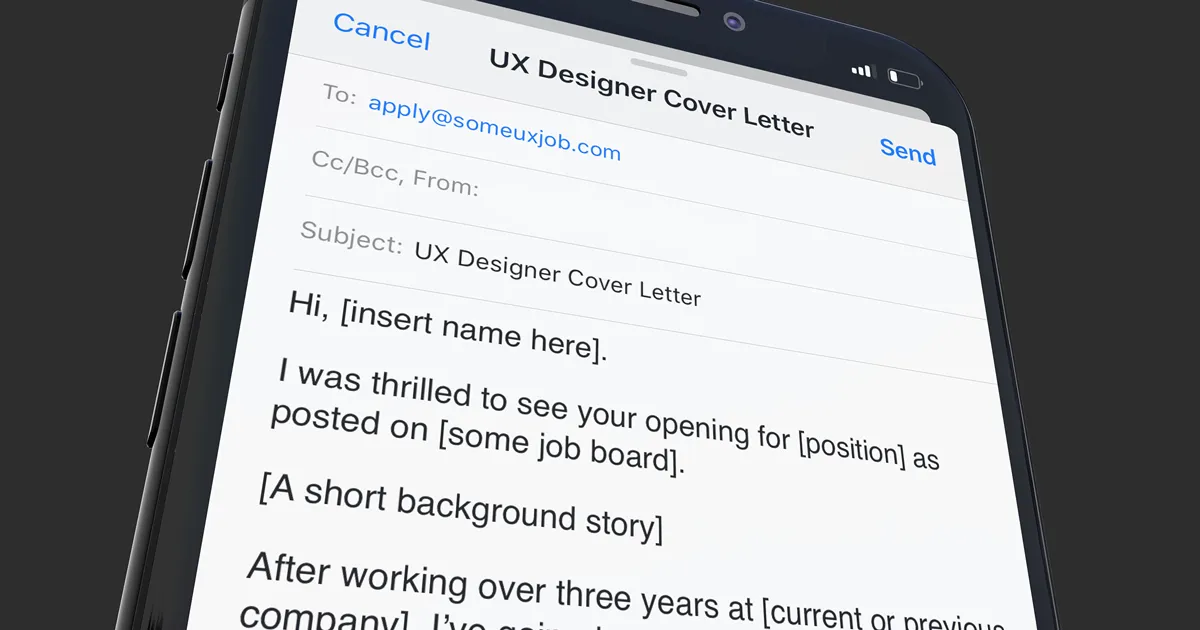
The body of your cover letter is where you demonstrate your skills, experience, and qualifications. Focus on highlighting the most relevant aspects of your background and tailoring these to meet the specific requirements outlined in the job description. Provide specific examples to support your claims. Use the STAR method (Situation, Task, Action, Result) to describe your past accomplishments, showing the context, the task you faced, the actions you took, and the outcomes you achieved. This method helps provide clear and concise information about your value. Include examples of projects where you applied your UX skills, showcasing your design process and problem-solving abilities. For instance, if the role requires user research skills, provide a detailed account of a research project you conducted, and how it improved the end result. Your goal is to demonstrate your abilities and how you could be a strong contributor to the company.
Crafting a Powerful Closing
The closing paragraph of your cover letter should be concise and leave a lasting impression. Restate your interest in the position, reiterate your enthusiasm for the company, and thank the hiring manager for their time and consideration. Include a call to action, encouraging them to take the next step. You can mention that your resume is attached and offer to provide further information or references if needed. You can also express your excitement about the potential to discuss your qualifications in more detail during an interview. Avoid generic phrases, such as “Thank you for your time.” Instead, aim for a more personalized and enthusiastic tone that shows your commitment to the role and the company. A strong closing reinforces your interest, reinforces your key skills, and ensures the hiring manager remembers you.
Formatting and Design Best Practices
In a design-focused field, your cover letter’s appearance matters. Formatting and design choices can enhance your professionalism and readability. Choose a clean, professional font such as Arial, Helvetica, or Calibri. Maintain a consistent font size (11 or 12 points) for easy readability. Use clear headings and subheadings to break up the text and guide the reader. Employ ample white space to prevent the letter from looking cluttered. Pay attention to alignment and spacing, ensuring the layout is balanced and visually appealing. You can use bolding for key phrases and titles. Use bullet points to outline your skills, achievements, and other important details. Ensure your letter’s design aligns with your personality and brand, as this reflects your attention to detail and commitment to design principles. Overall, good formatting helps the recruiter read the content with ease.
Ensuring Readability
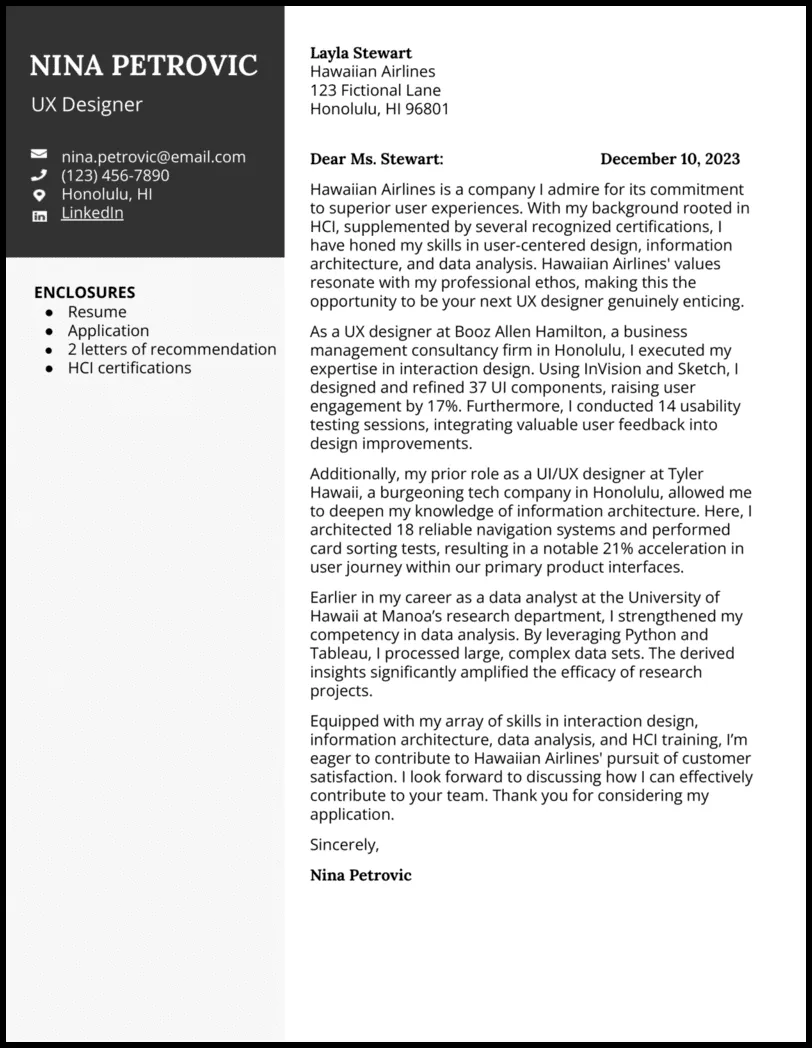
Readability is essential to your cover letter’s success. Make it easy for the hiring manager to understand your skills and experience quickly. Keep sentences and paragraphs concise, avoiding overly long or complex structures. Use active voice instead of passive voice to convey information directly. Break up lengthy blocks of text with headings, subheadings, bullet points, and white space. This allows the hiring manager to scan the information and grasp the essential points quickly. Prioritize clarity and focus on conveying your message effectively. Read your cover letter aloud to identify any awkward phrasing or areas where you can improve the flow. Edit to ensure your language is clear, direct, and professional. By focusing on readability, you will ensure your cover letter is engaging and accessible, increasing the likelihood of it being read and considered carefully.
Proofreading and Editing
Proofreading and editing are non-negotiable steps in the cover letter writing process. Before submitting your application, carefully proofread your cover letter for any errors in grammar, spelling, punctuation, and formatting. Errors can make your application seem unprofessional. Use spell check and grammar check tools, but do not rely solely on these tools. These tools may not catch contextually inappropriate words or subtle errors. Read your cover letter aloud to catch any awkward phrasing or sentences that don’t flow well. Ask a friend, colleague, or mentor to review your cover letter for feedback. Having a second pair of eyes can help identify mistakes you may have overlooked. Ensure your cover letter is polished and error-free, as the quality of your writing reflects your attention to detail and professionalism, which are essential qualities in UX design.
Common Mistakes to Avoid
There are some common mistakes to avoid when creating a UX Designer cover letter. Making these mistakes can significantly harm your chances. One common mistake is submitting a generic cover letter. These do not demonstrate a genuine interest in the specific role or company. Avoid focusing too much on yourself and not enough on how you can contribute to the company’s needs. Remember that the hiring manager is primarily interested in how you can solve their problems. Do not ignore the job description. Failing to address the specific requirements outlined in the job posting can indicate a lack of attention to detail. Avoid using weak language, such as vague descriptions of your skills. Instead, quantify your achievements and provide concrete examples. Finally, always include a link to your portfolio and other relevant examples of your work to demonstrate your capabilities effectively.
Generic Cover Letters
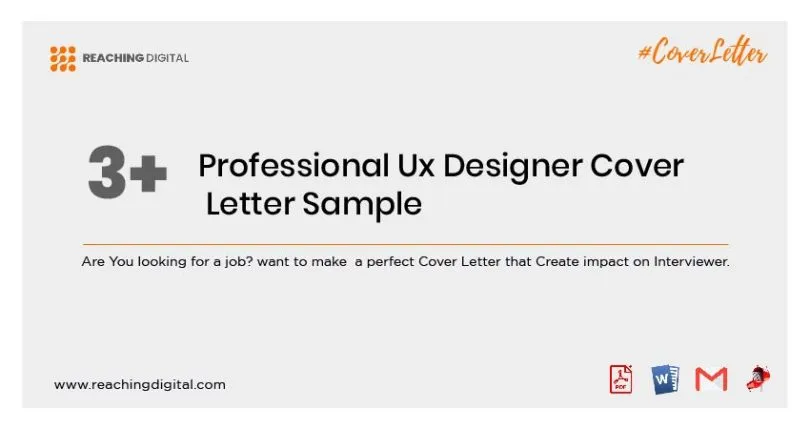
One of the most significant mistakes is submitting a generic cover letter that lacks personalization. Generic cover letters are usually applicable to any job and don’t showcase the specific connection you have with the role. These cover letters often fail to demonstrate a genuine interest in the company or the position. Hiring managers can easily spot generic cover letters, and they tend to discard them quickly. Avoid this issue by tailoring your letter to each specific role and company. Research the company, understand its values, and highlight how your skills and experience align with their needs. Show that you have taken the time to understand the role and demonstrate your genuine interest in the opportunity. Your cover letter should be as unique as your design skills, making it stand out from the generic applications.
Focusing on Yourself Too Much
While the cover letter is about presenting yourself, it should not solely focus on your needs and desires. A common mistake is dedicating too much space to talking about your aspirations and interests without directly relating them to the needs of the company. The hiring manager is most interested in knowing how you can help them solve problems and achieve their goals. Instead of focusing on your own achievements, frame your experience in a way that highlights how your skills and experience align with their needs. Provide examples of how you’ve solved similar problems or contributed to similar outcomes in the past. Show the value you would bring to the company, and explain the benefit of hiring you. By positioning your skills and achievements in the context of the company’s requirements, you increase your chances of making a lasting impression.
Ignoring the Job Description
Ignoring the job description is a significant mistake that can easily lead to rejection. The job description serves as the primary guide for the hiring manager. It outlines the key requirements, desired skills, and specific expectations of the role. Failing to address these aspects in your cover letter shows a lack of attention to detail and a failure to understand the position. Carefully review the job description and address the key points directly in your cover letter. Use the job description as a blueprint for your letter, highlighting your experience and how it aligns with the stated requirements. Use the same keywords and phrases to show that you have a good understanding of the role. By demonstrating your clear understanding of the job requirements and your ability to fulfill them, you increase your chances of being considered a strong candidate.
Using Weak Language
Avoid weak language, which can diminish the impact of your cover letter. Using vague and general terms will not create a strong impression. Instead of using phrases like “I have experience with…” use strong, action-oriented language that clearly states your skills and achievements. Quantify your achievements whenever possible. Instead of saying you improved user engagement, state the percentage increase. Be clear and precise about your accomplishments. Provide specific examples of projects where you applied your UX skills, demonstrating your abilities with a clear explanation of your role. This shows that you are confident in your abilities and that you can provide real value to the company.
Leveraging Portfolio and Examples
Always provide a link to your portfolio and other relevant examples of your work. As a UX designer, your portfolio is the most critical element. Your portfolio is where you showcase your design projects and skills in detail. Include a link to your online portfolio in your cover letter, preferably in the heading. You may also link to specific case studies that align with the job requirements. If you have project documentation, research findings, or design prototypes, consider including links to these resources as well. This allows the hiring manager to quickly assess your design skills and capabilities. Ensure your portfolio is up-to-date, well-organized, and easy to navigate. A well-crafted portfolio will enhance your credibility and greatly increase your chances of landing an interview.
